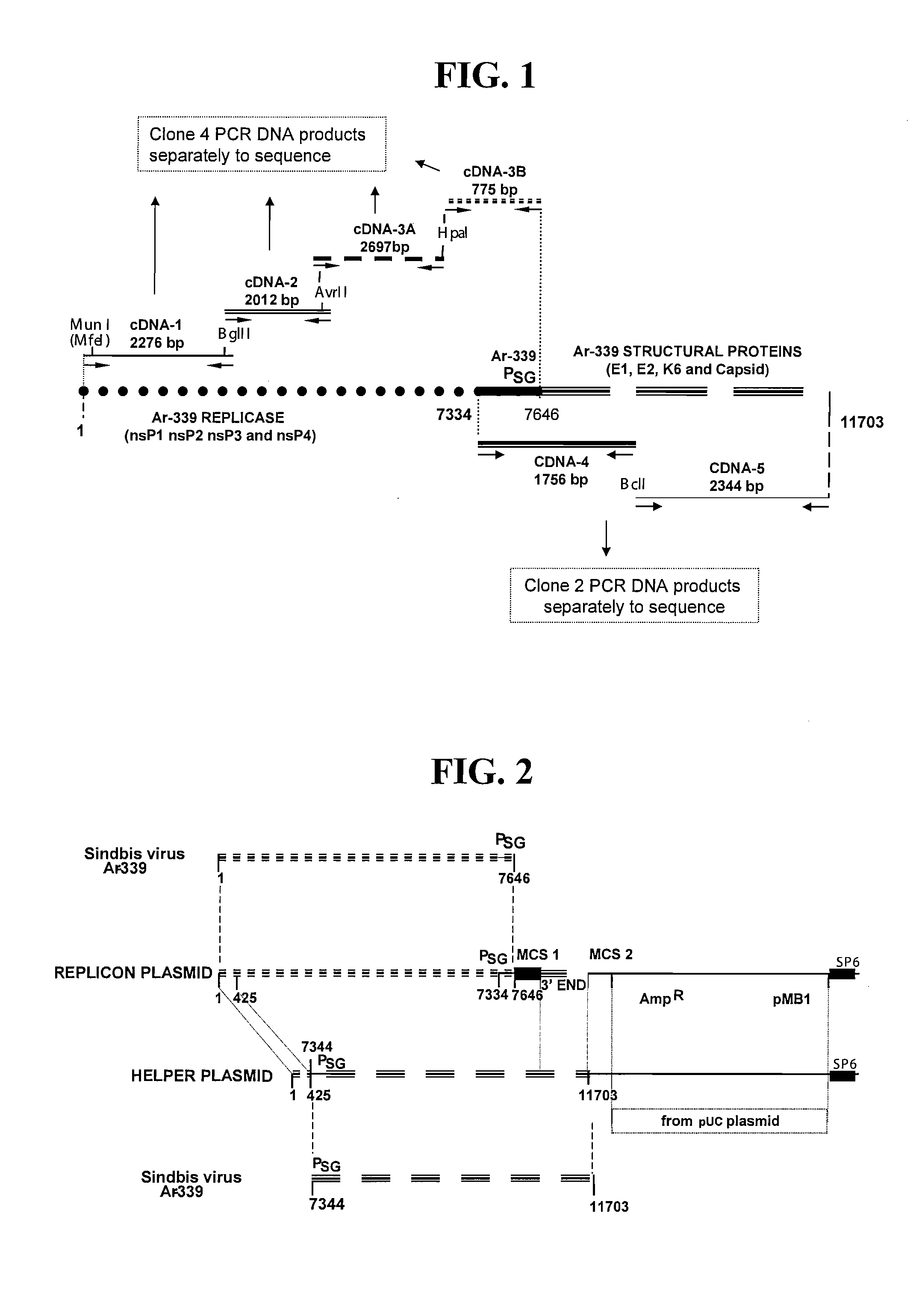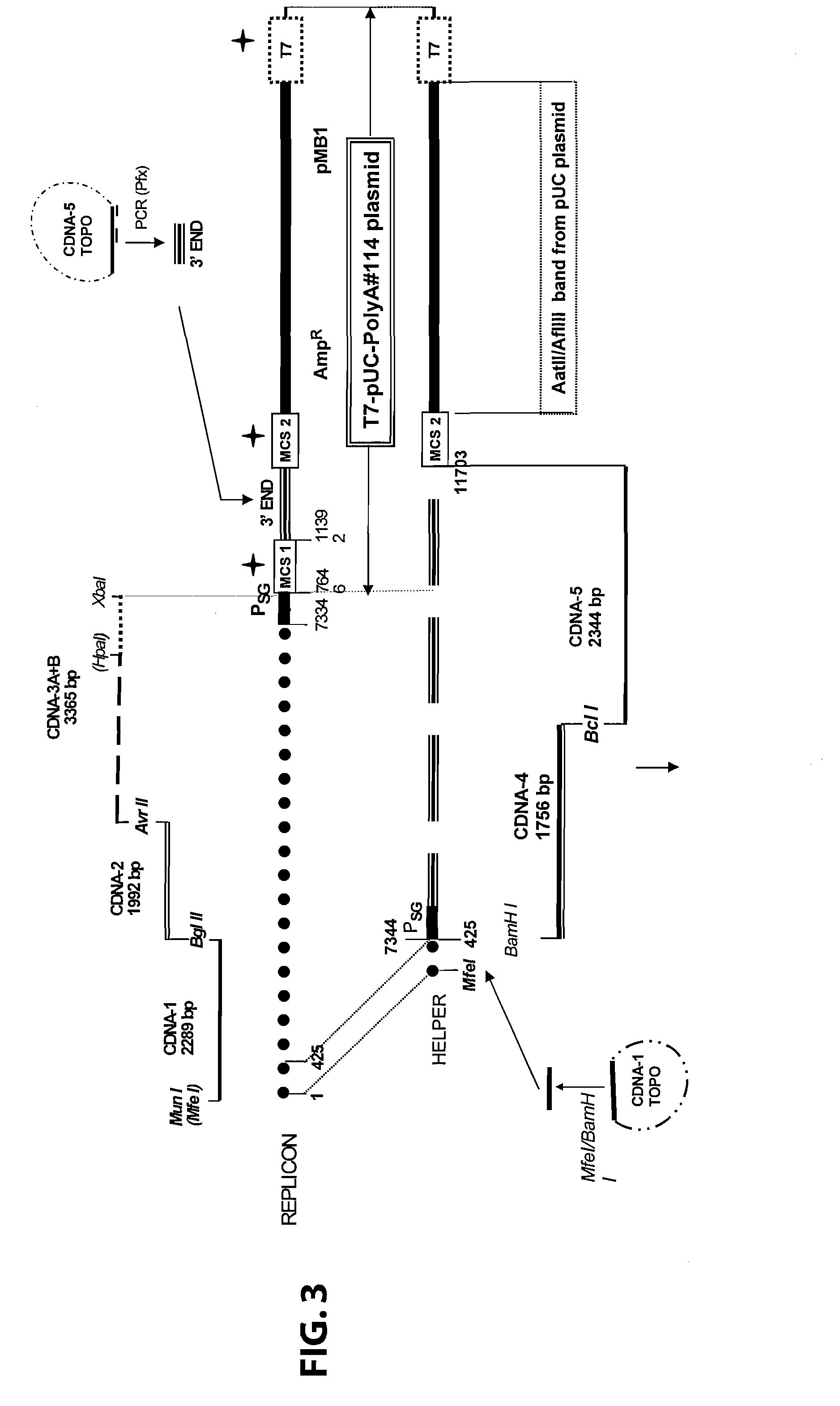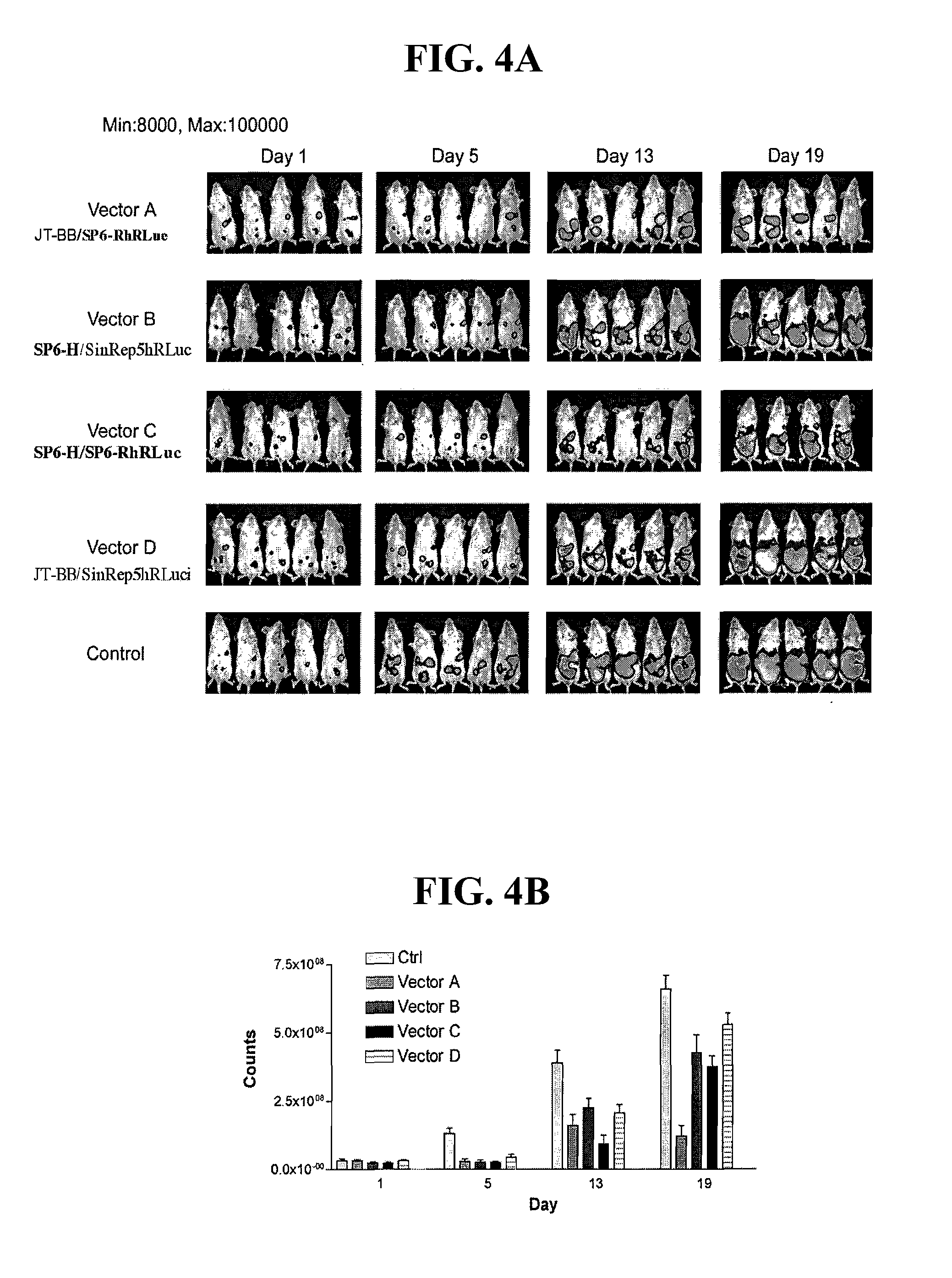Defective sindbis viral vectors
a technology of sindbis and viral vectors, applied in the field of sindbis viral vectors, can solve the problems that the survival rate of all mice in these tumor models has not yet been achieved, and achieve the effects of suppressing the ability to target metastatic tumor implants, reducing tumor mortality, and reducing tumor mortality
- Summary
- Abstract
- Description
- Claims
- Application Information
AI Technical Summary
Benefits of technology
Problems solved by technology
Method used
Image
Examples
example 2
[0106] Cells. BHK-21, and ES-2 cells were obtained from the American Type Culture Collection (ATCC). BHK-21 cells were maintained in αMEM (JRH Bioscience) with 5% FBS. ES-2 cells were derived from a patient with clear cell carcinoma, a type of ovarian cancer that has a poor prognosis and is resistant to several chemotherapeutic agents including cisplatin. ES-2 cells were cultured in McCoy's 5A medium (Mediatech) with 5% FBS. All basal media were supplemented with 100 μg / ml of penicillin-streptomycin and 0.5 μg / ml of amphotericin B (both from Mediatech). ES-2 / Fluc cells were derived from the ES-2 line by transfection of a plasmid, pIRES2-Luc / EGFP, that expresses a bicistronic mRNA transcript containing both firefly luciferase and EGFP genes. To construct the pIRES2-Luc / EGFP plasmid, a DNA fragment containing the luciferase gene was obtained from pGL-3 basic plasmid (Promega) and then subcloned into the multicloning sites of the pIRES2-EGFP plasmid (BD Biosciences Clontech).
[0107] Th...
example 3
L PROPERTIES
[0138] Most of the amino acid differences found between JT and Ar-339 vectors were in the envelope proteins. One of them was related to virus adaptation to BHK-2 1, E2 Lys 70 to Glu (McNight K et al, 1996) and two of them were located in the receptor-binding domain of the E2 protein. To analyze if the amino acid changes had any effect on the viral vector's infectivity, JT, Ar-339 and chimeric viral vectors were produced and titered in three cell lines: BHK-21 (baby hamster kidney), ES-2 and Mosec human and mouse ovarian cancer cell lines respectively. The results are shown in Table VII (Appendix A). Vectors that carry JT-BB helper (JT-BB / SP6-ARepLacZ and JT-BB / JT-RepLacZ) had titers two logarithms higher in BHK-21 than in the other two cell lines; when the helper was SP6-H, the difference observed was only one log. The infectivity of the vectors in vitro was similar in both ovarian cancer cell lines, ES-2 and Mosec. This difference was observed in rep...
example 4
ON OF DISEASE PROGRESSION BY Ar-339, MUT-4 AND JT VECTORS
[0154] In previous mouse experiments Vector C showed background infections in some of the animals treated. Although this effect was transient and vector C was efficient in suppression of disease progression, it would be preferable for gene therapy to use a viral vector that does not cause background tissue infections. In tumor targeting experiments of SP6-HE2 mutants, vector Mut-4 showed tumor targeting although with less intensity than vector C (FIG. 11) and did not show background infection (compare FIG. 10A and 10B). With the aim of improving this vector system, the ability of Mut-4 in tumor reduction was studied and vector-tumor colocalization analyzed, using the same model described for vectors A, B, C and D as in previous experiments.
[0155] Materials and Methods
[0156] Animal models. All animal experiments were done in accordance with NIH and institutional guidelines. To determine the therapeutic effects of Sindbis viru...
PUM
| Property | Measurement | Unit |
|---|---|---|
| concentration | aaaaa | aaaaa |
| concentration | aaaaa | aaaaa |
| temperature | aaaaa | aaaaa |
Abstract
Description
Claims
Application Information
 Login to View More
Login to View More - R&D
- Intellectual Property
- Life Sciences
- Materials
- Tech Scout
- Unparalleled Data Quality
- Higher Quality Content
- 60% Fewer Hallucinations
Browse by: Latest US Patents, China's latest patents, Technical Efficacy Thesaurus, Application Domain, Technology Topic, Popular Technical Reports.
© 2025 PatSnap. All rights reserved.Legal|Privacy policy|Modern Slavery Act Transparency Statement|Sitemap|About US| Contact US: help@patsnap.com



